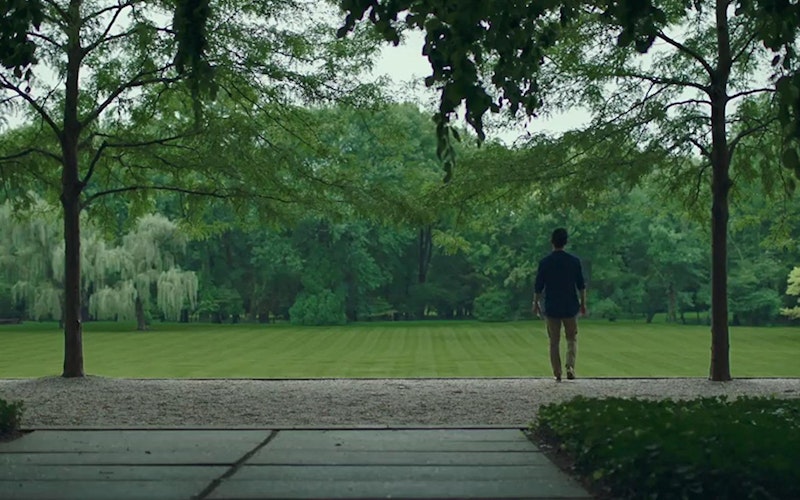
Movies
Columbus and the Architecture of Worship
When I first stepped into the enormous Canterbury Cathedral, which direction do you suppose I looked? This, the central location of worship for the Church of England, is a series of heavenly columns drawing the eye upward in a posture of rapt attention. All the architectural elements are crafted for fostering wonder. It’s a stark contrast to a few of the American churches where I’ve served as a pastor, with worship services taking place in a gymnasium or multipurpose room. These buildings boasted the aesthetics of a Costco—large, practical, designed for consumers. The flying buttresses, ornate ceilings, and stained-glass windows of European cathedrals were traded for fluorescent lighting, wide-screen projectors, and basketball hoops.
Are one of these approaches to church architecture better than another? Are cathedrals works of immense beauty or ostentatious idols? Does architectural style and nuance really matter when it comes to church buildings, or should it be more about parking lots and pragmatics?
The beautiful, meditative new film Columbus, which markes the feature debut of video essayist Kogonada, prominently features a church building in its opening scenes. The lines of First Christian Church, located in Columbus, Ind, are simple and pronounced. Neither cathedral nor megachurch, it is one of the first “modern” church buildings in the United States. In the movie, Casey (Haley Lu Richardson), a young library employee, eyes the building’s entrance with the concentration of a museum-goer. Smoking a cigarette, she mutters to herself what sounds like the transcript from a tour guide, describing the building’s features with remarkable clarity and poetic flourish.
Later, when asked if she believes in anything religious, Casey responds in the negative. Yet her devotion to the buildings of her hometown has a saint-like piety. Her passion for architecture and design bubbles out of her, as if she cannot help but evangelize to those who are willing to listen about the good news of modernist patterns and ideas. It’s what prompts her to speak to Jin (John Cho), the jaded son of an architectural design professor who fell into a sudden coma, necessitating Jin’s visit to Columbus. Though remarkably different in background and perspective, these two individuals find a sincere camaraderie over architecture and familial commitment.
As the two walk and talk through the buildings of Columbus, what may have been an ordinary bank entrance or inn hallway becomes sacred space. Philosopher Martin Buber, author of I And Thou, describes the presence of grace through relational connection, and that is exactly what’s fostered in the movie’s settings. These environments—be it a building, a lawn, or a kitchen—reveal themselves as places of worship, locations for true connection.
If we pause to ponder our environments, perhaps we might see them as sacred spaces.
In theologian Paul Tillich’s On Art and Architecture, he notes that there is a difference between a person’s surroundings and their environment. For Tillich, surroundings are the objects and aesthetics which make up the physical realm surrounding a person. Environment makes something of these surroundings—it is the creation of a person’s world, adding beauty, structure, and purpose as the person “selects from the surroundings what shall become of [his or her] environment.” Surroundings are simply there; environments evoke, invoke, and point towards something (or Someone). A house may be a person’s surroundings; a house of worship is an environment.
Columbus hints at this through a parallel distinction, between attention and interest. Casey’s co-worker at the library, portrayed with an affable goofiness by Rory Culkin, offers a diatribe about the attention span of kids and adults, how one’s ability to focus on a particular subject has less to do with shorter attention spans and more with lack of interest in the activity. We give our fullest attention to what interests us, to the object of our affections. This focused interest creates our environment; everything else is mere surroundings. The cinematography and blocking of Columbus embody this very approach, as Kogonada frames each moment with architectural precision. Camera placement and angles are noticeably calculated and static, without ever feeling stiff or robotic. Each shot simply gives enough space to allow the audience’s interest to grow for these characters and their relational dynamics. Indeed, Columbus is inviting us to expand and deepen our interests, to take the time to truly look closer and examine the lines, colors, and spaces in our immediate context. If we would pause to ponder our environments, perhaps we might see them as sacred spaces, full of potential for encounters with each other and with the divine.
Casey says that many people in her town don’t even recognize the architectural wonders of Columbus. They walk in and out of buildings without ever acknowledging the beauty surrounding them. I wonder how often I have walked in and out of a church service and missed the divine beauty present in the worship. Did I leave the surroundings as simply surroundings, or did I allow for the creation of a worshipful environment? Moreover, how many paths have I walked down, doors I’ve entered and exited, human beings I’ve beheld, yet there was no time given to properly foster a sense of awe.
Perhaps this is the beginning of worship. We give the Lord our fullest attention precisely because we are interested in the truth and beauty we find: a God who has already shown a peculiar interest in us.
Topics: Movies, Culture At Large, Arts & Leisure